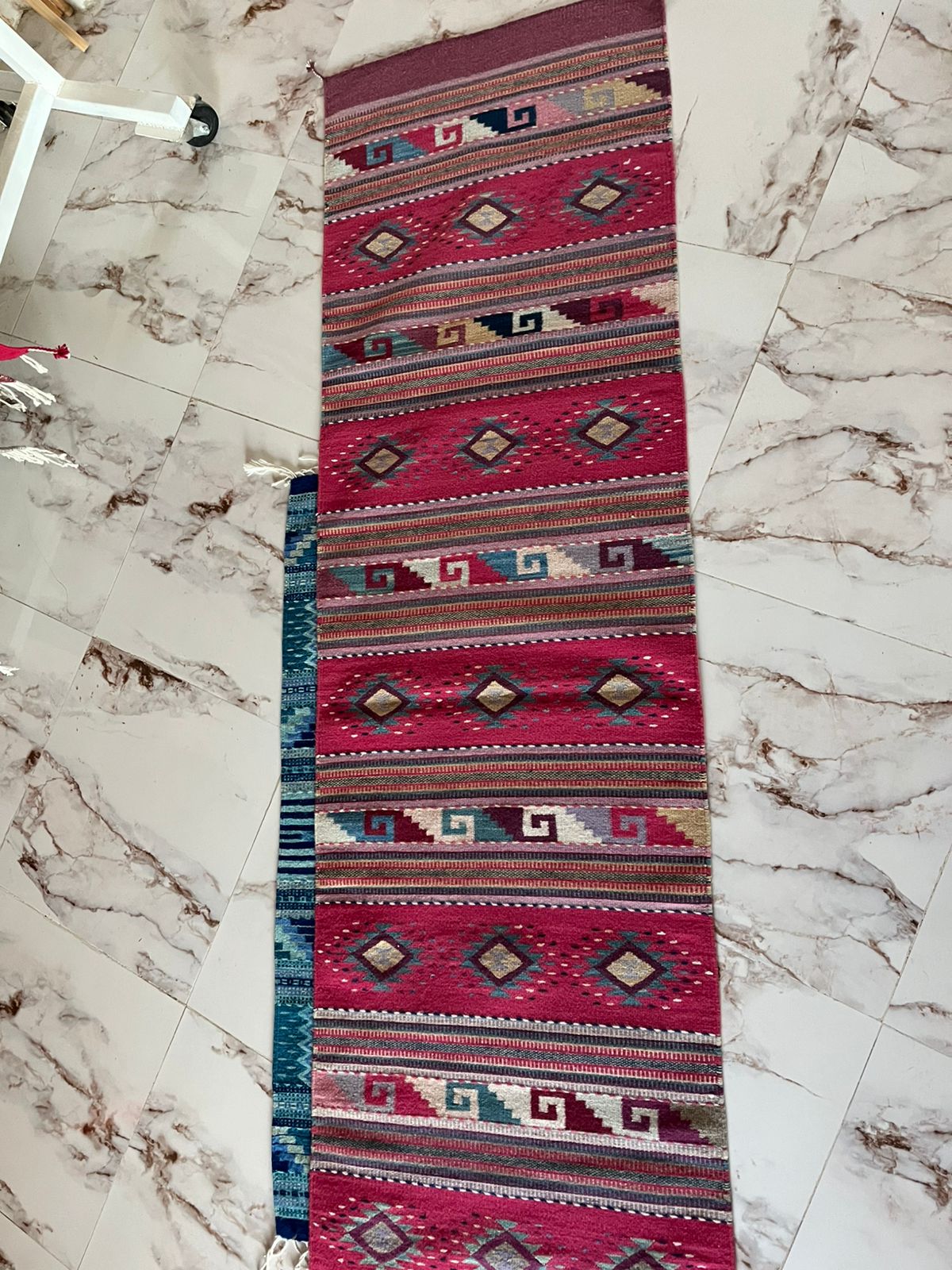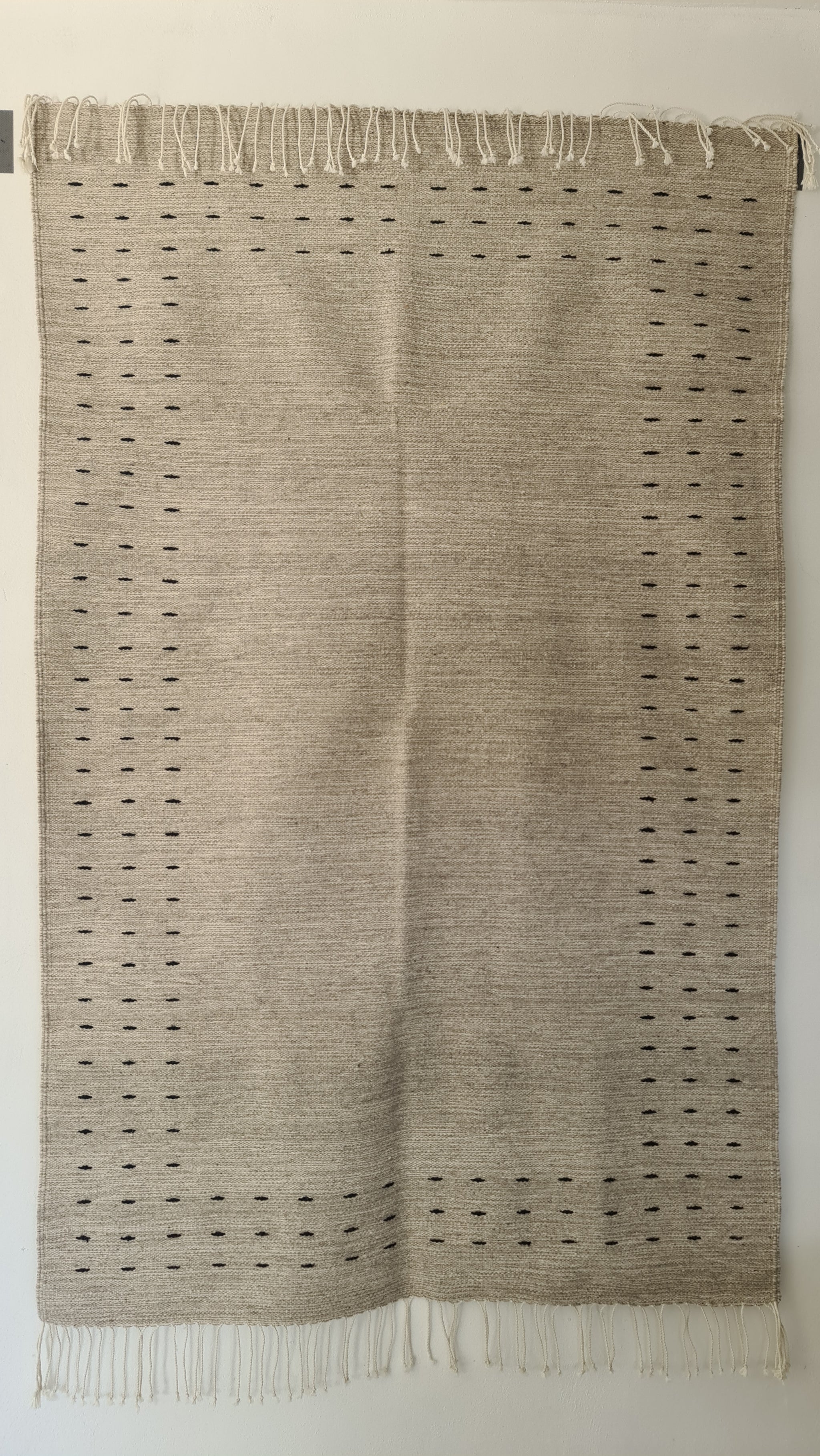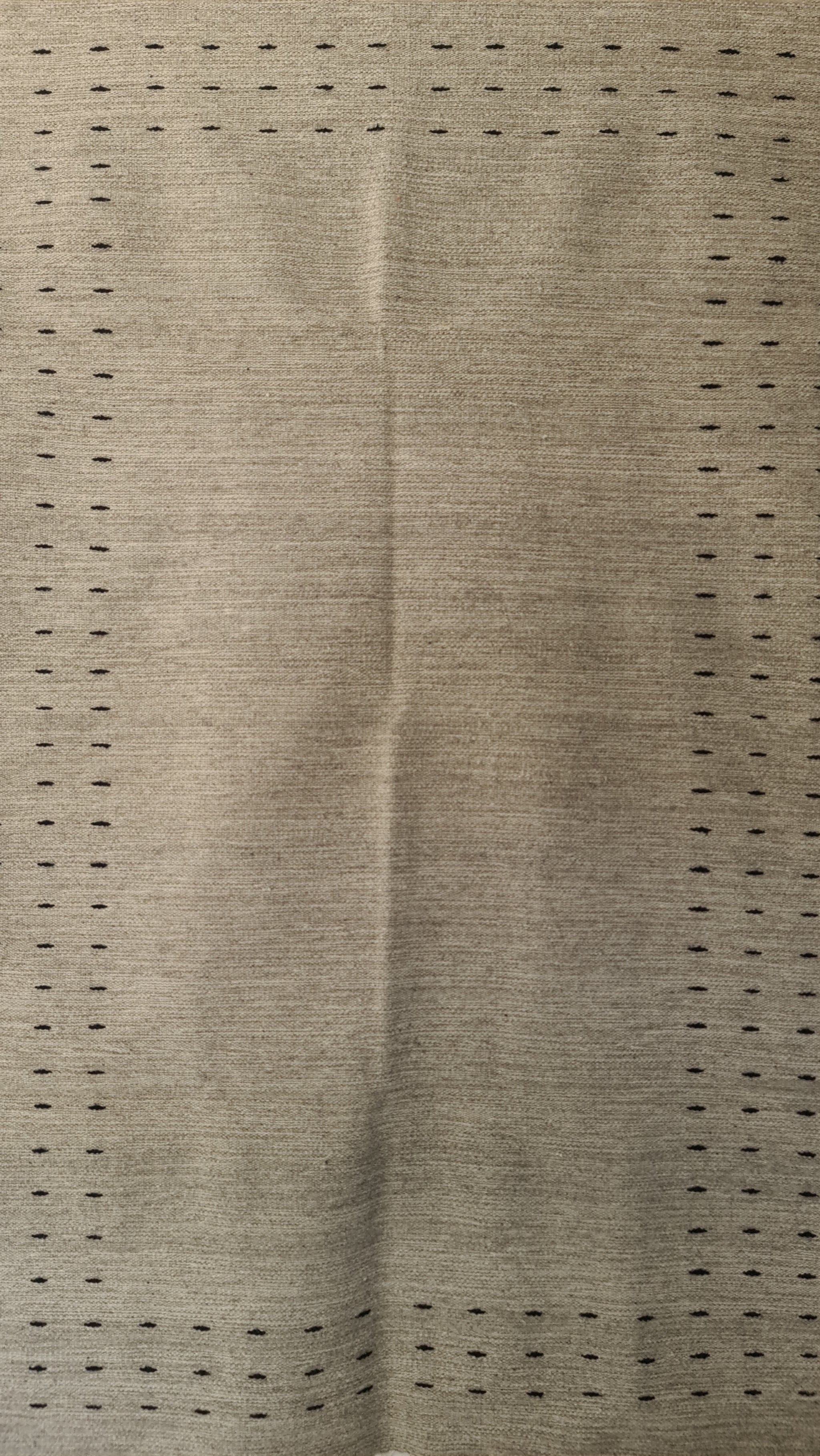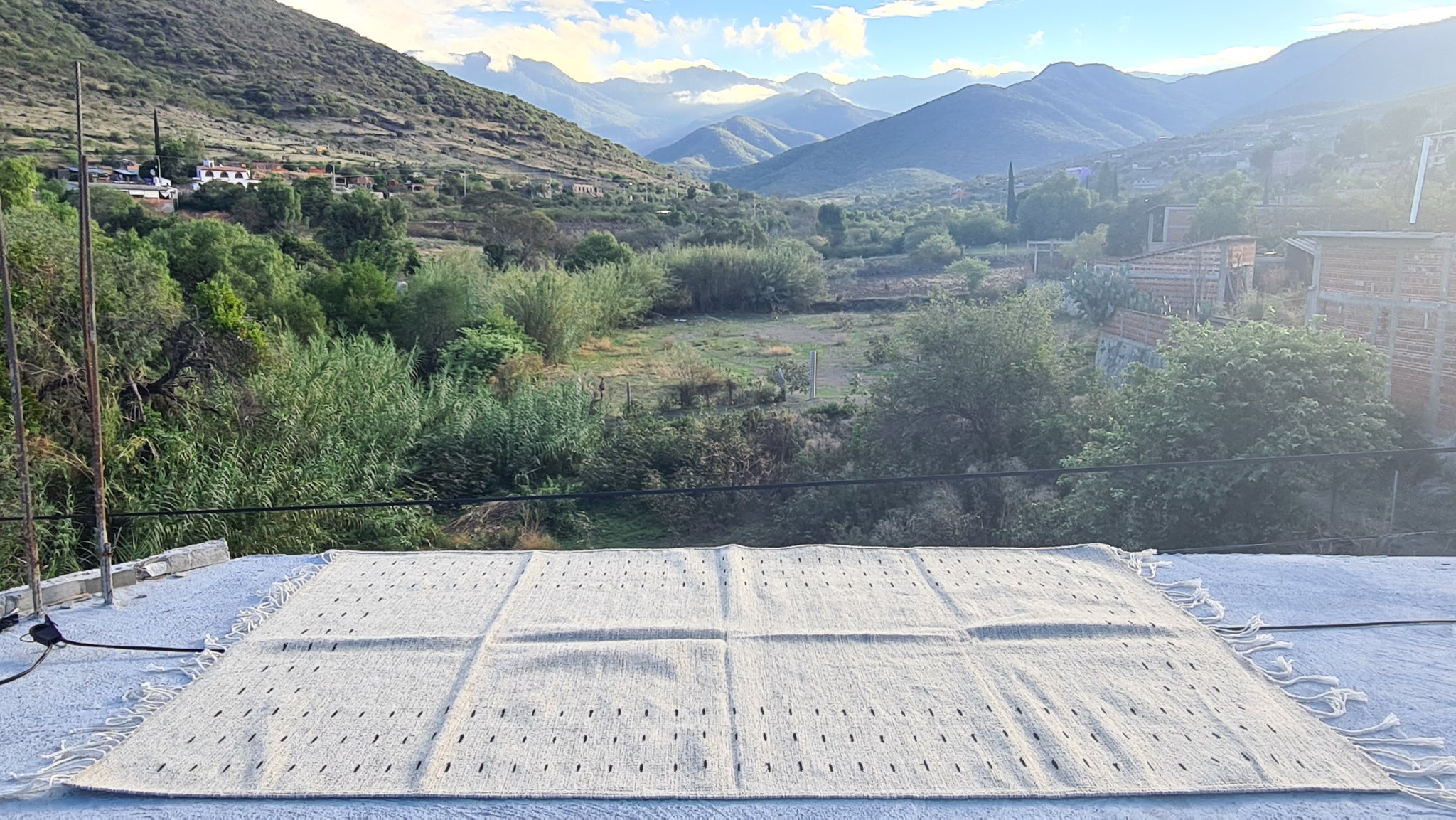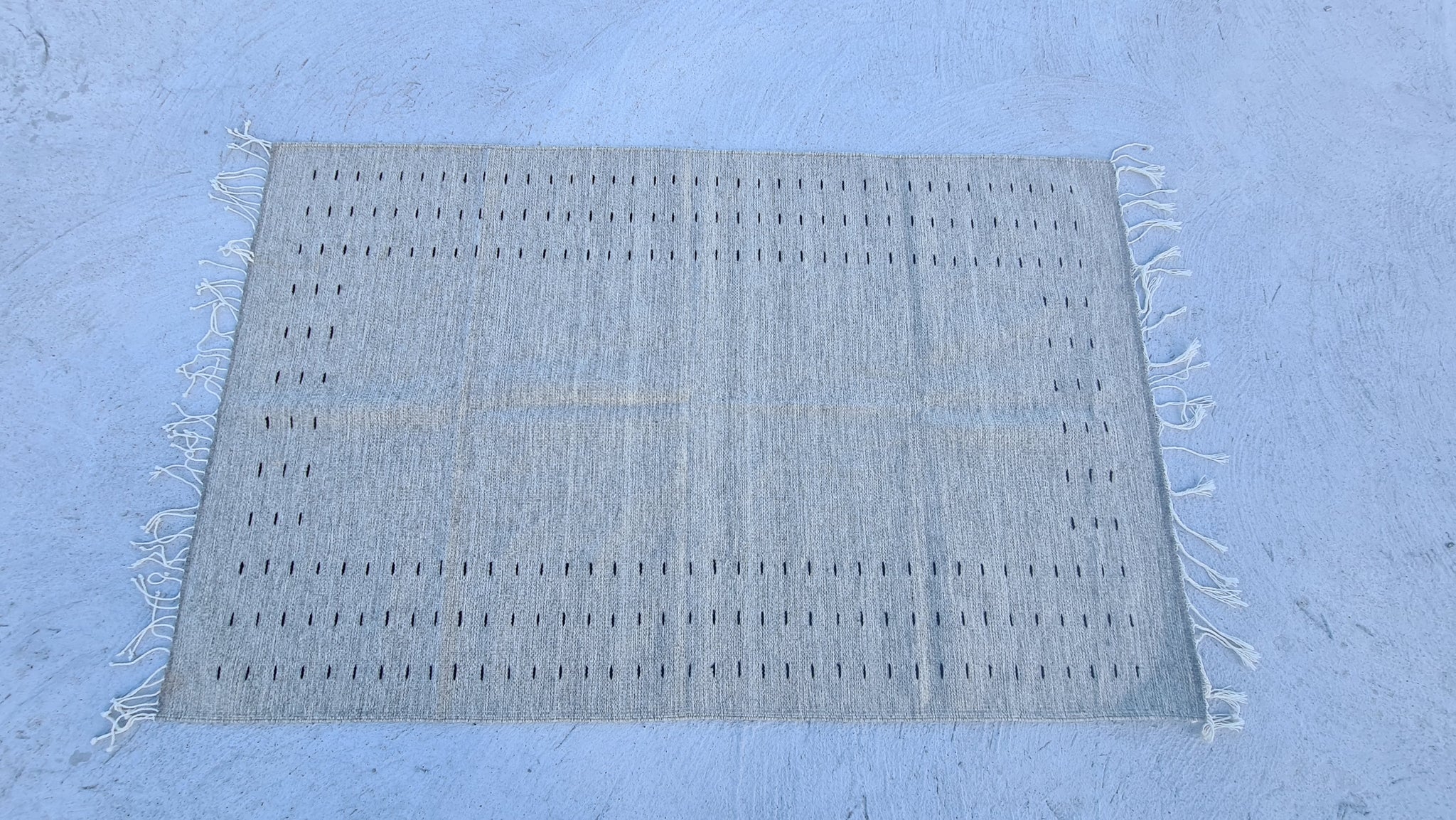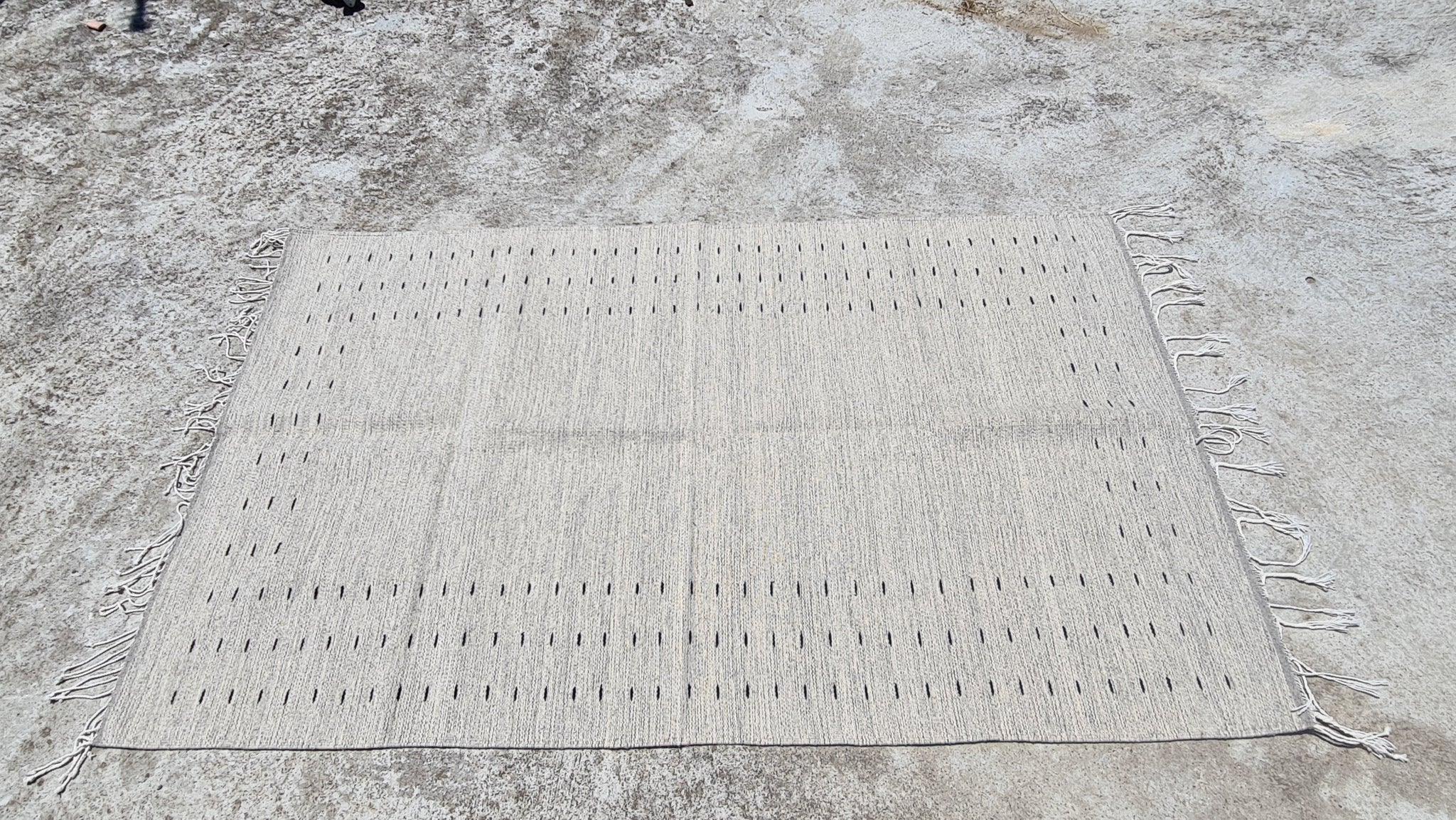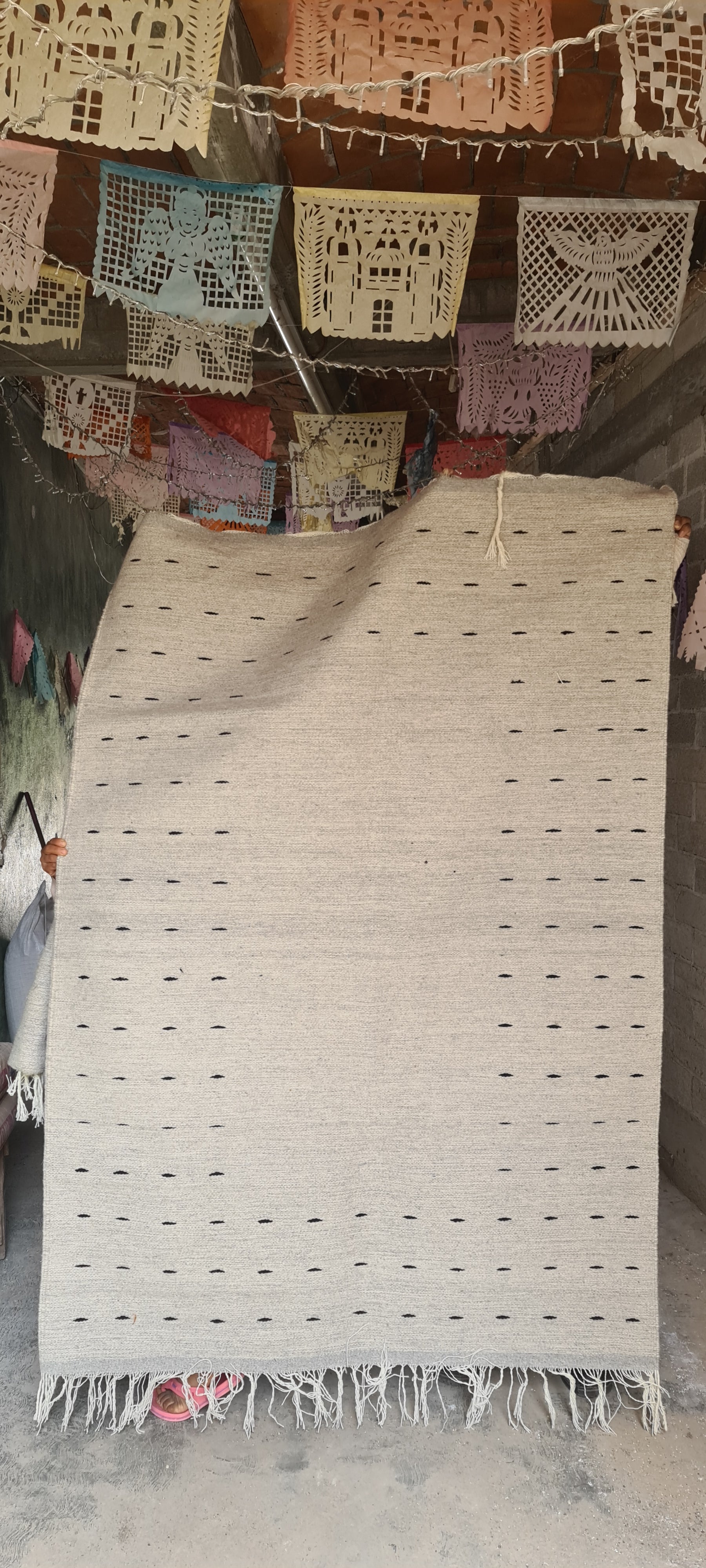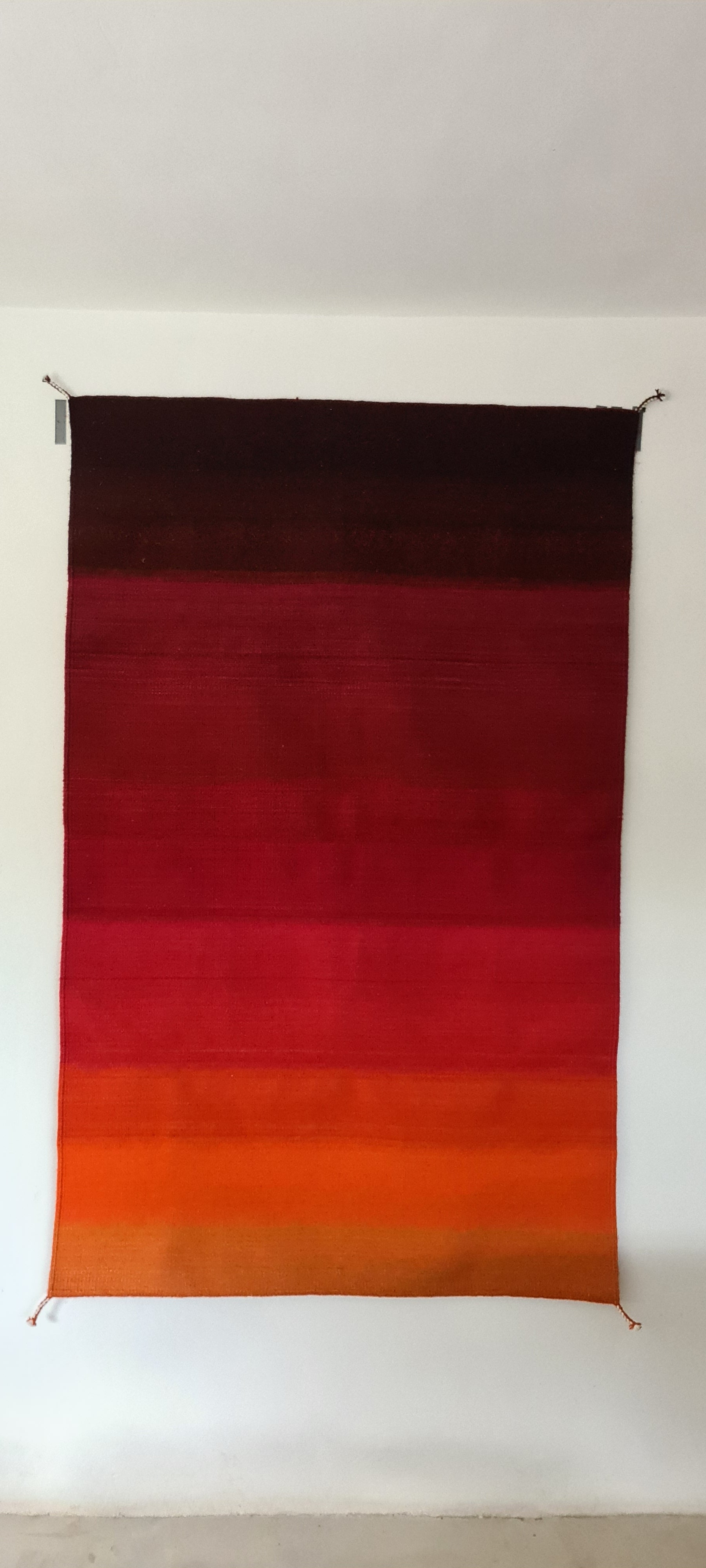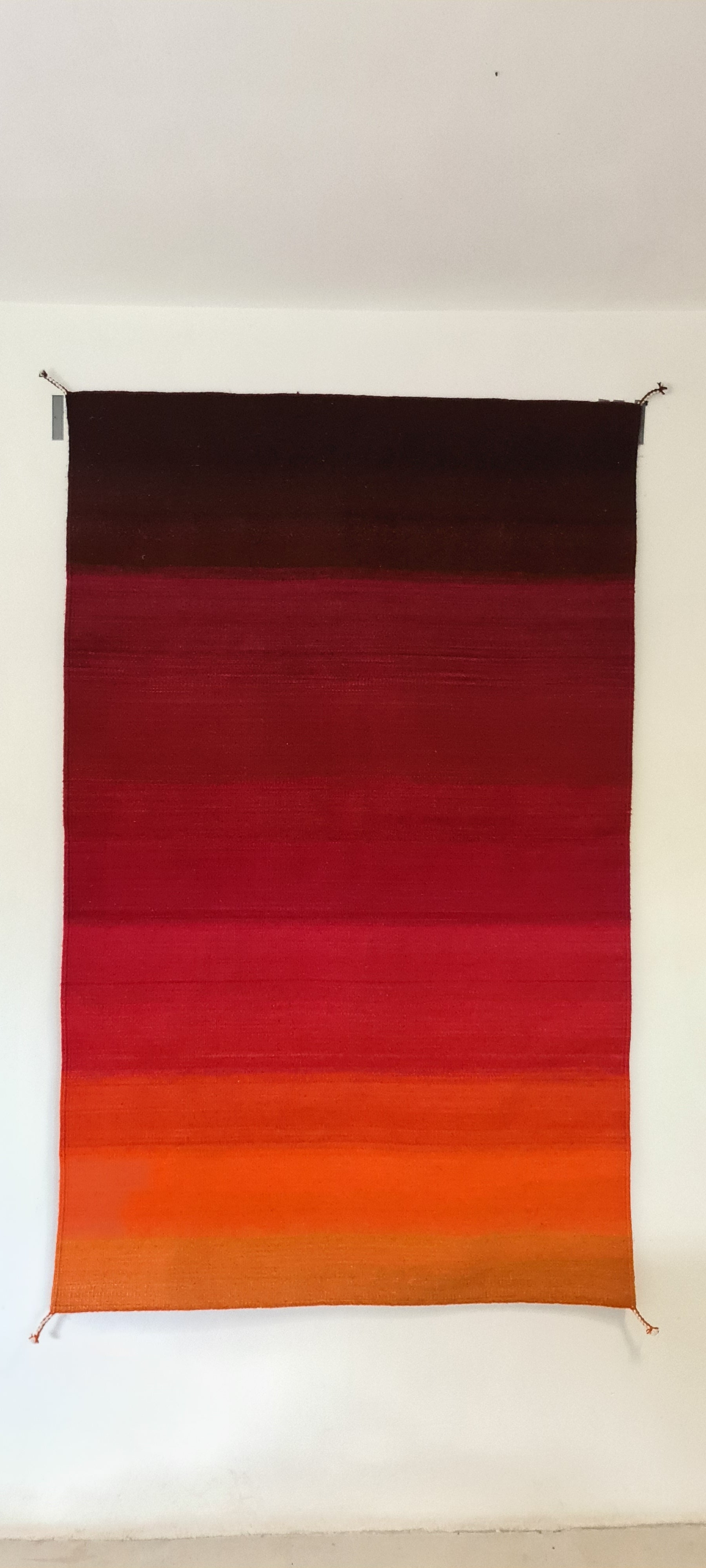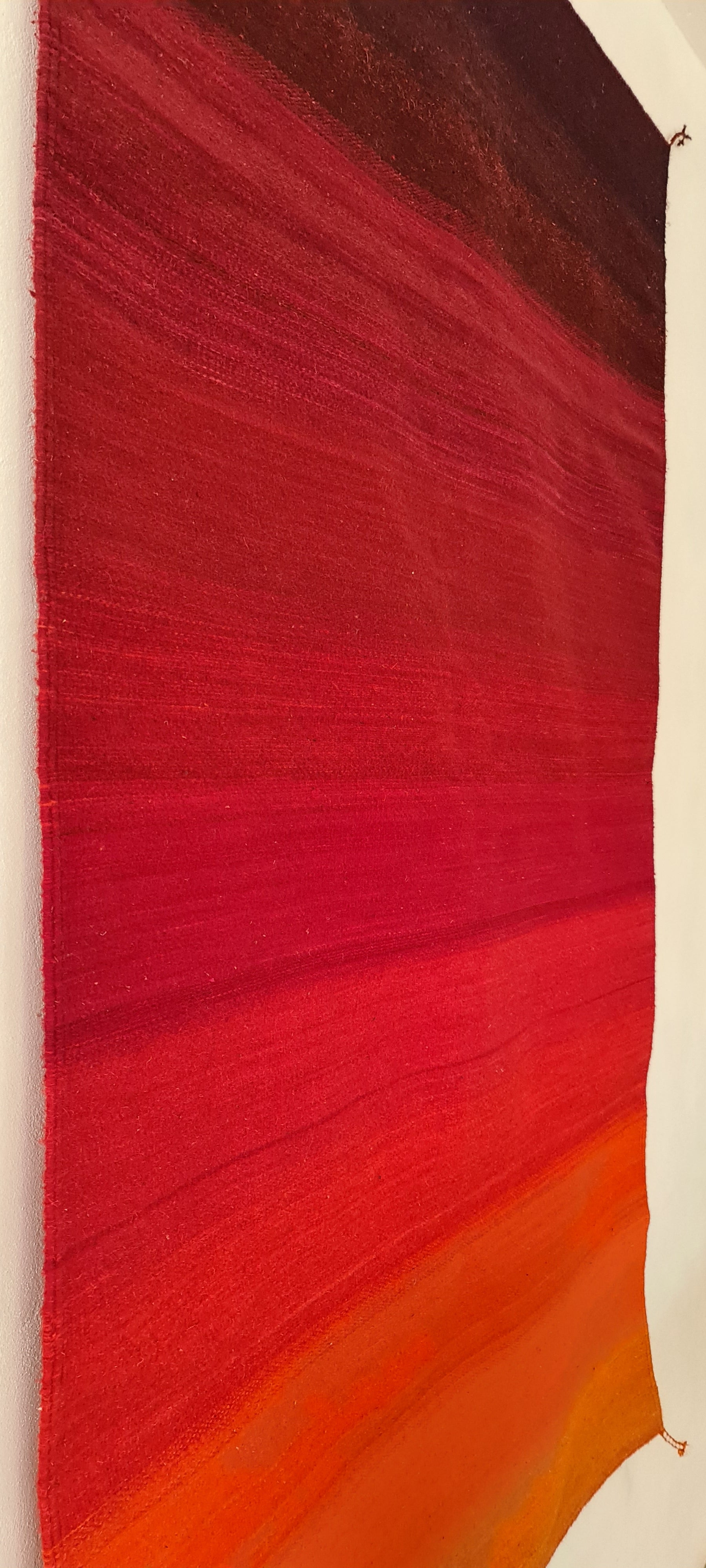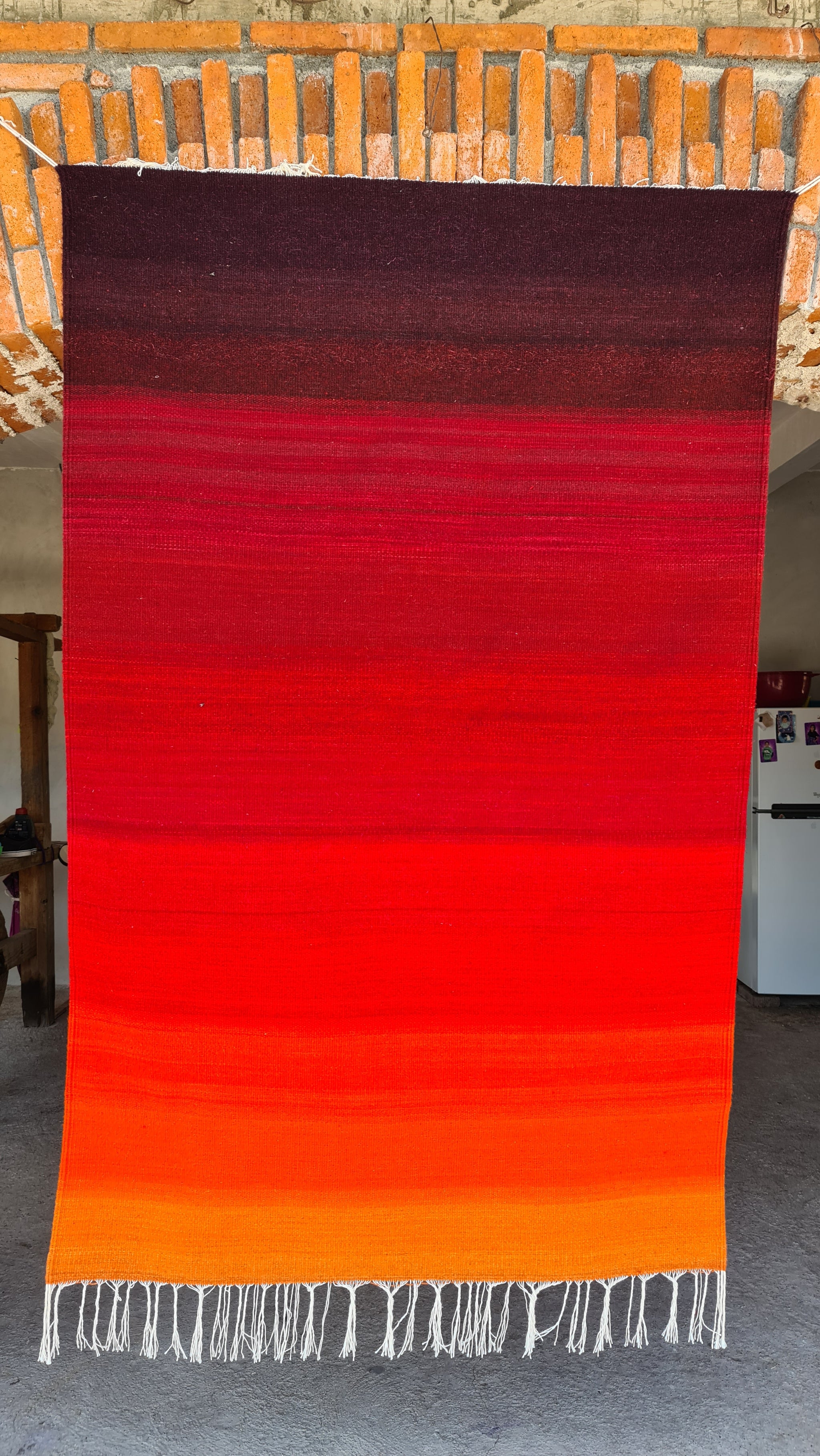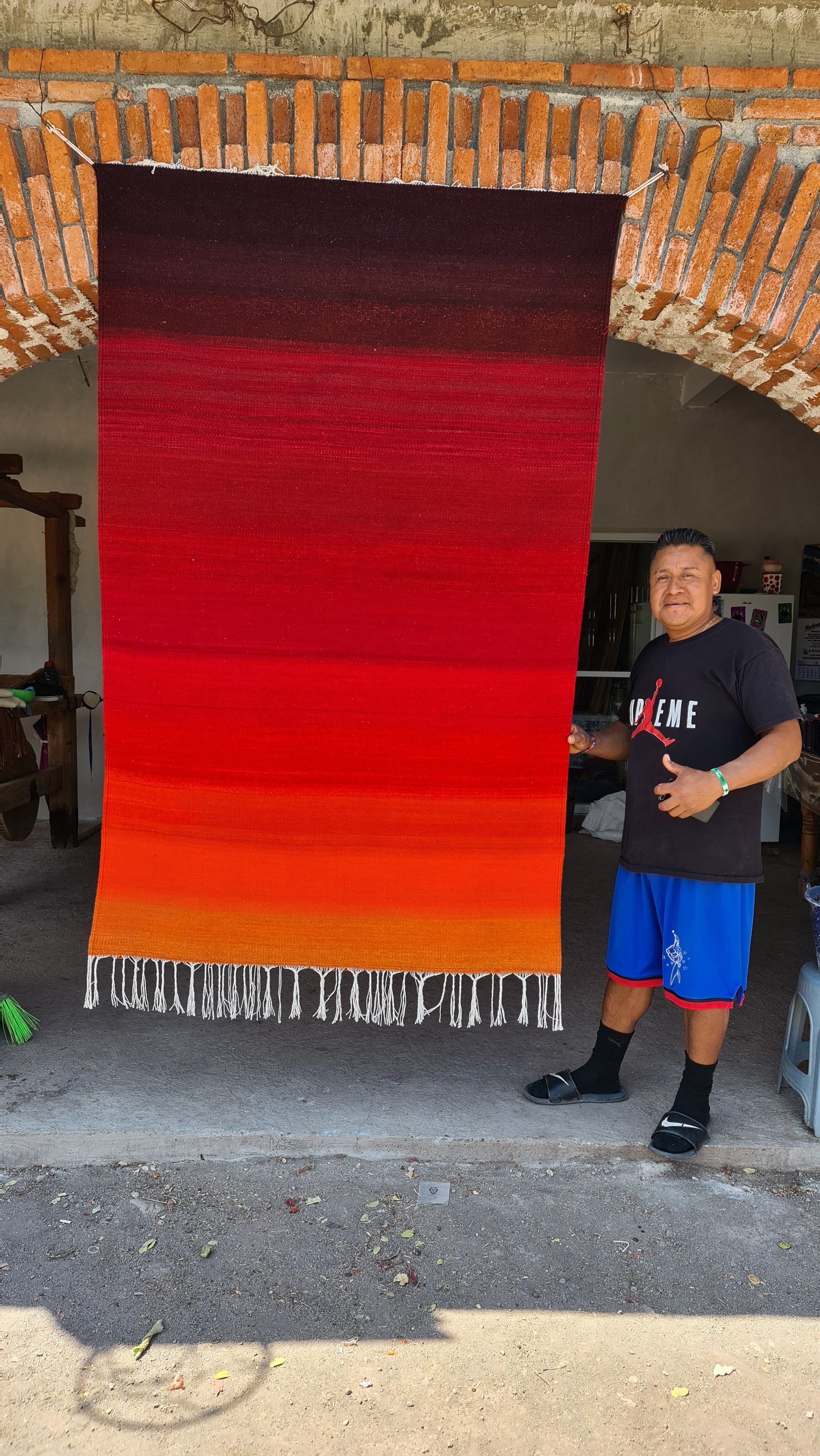Niis gyea: rain prayers
$ 18,000.00
Size: 77x293cm; 2.5x9.6ft
Master weaver: Mario Bautista Martínez
Approximate price in USD $965
Materials and methods: criollo sheep wool hand dyed with natural dyes: Xiuhquilitl (indigofera suffruticosa) . Handwoven on a Zapotec style loom of the 16th century adapted from European styles. Woven using a 7 threads per inch reed and wool rayon blend for warp.
Design, patterns and symbol
The combination of two yarns with a row of the background color and one pass of the other color gives us the rain pattern. We dedicate this rug as our rain prayer for our milpa fields (corn, beans and squash agroecological food system). This year was particularly challenging with the rain patterns; hence the two shades of indigo dyed blue was use. First we had good thunder storms in May and then good showers in June, many of the early planters did well but as of midjune, the canicule (dog days of summer) almost 40 days of intense heat and no rain came in early and was prolonged until mid August, with ocassional small showers here and there. The corn, beans and squash work well together and support each other during these hard days of summer, the corn plant actually can channel morning dew down to its base and roots, the bean plant fixes nitrogen and gets benefited from the harvested dew, this is why in our language the word for brother to sister is bisánaa, my bean plant, then the squash with its broad leaves provides soil coverage and weed supression. There are microclimate areas where there has been more consistent rain, such as our town center, unfortunately the spanish built the town there and now we are pouring the streets with concrete and building homes everywhere in this area, so our milpa fields are mostly on the dry area of our village. This also happens with Oaxaca city, it consistently gets more rain than the outskirts of the central valleys, no wonder why the Zapotec people established there in the first place, but now they are concrete city blocks that don't let water sink back into the earth and replenish the acquifers. Some policitians embraced the idea of the sponge city, but this idea seems to have died out as we moved past election time. Other cities in the world are realizing the need to regenerate and recover green spaces while others seem to clinge to the idea that progress looks like paved streets all the way. Certainly more city planning is needed to adapt the the inminent challenges of climate chaos and intesification. Our grandparents told us prophecies of this times ahead we are prepared in advanced, the workf of Frank Diaz shows that this prophecies are not merely guesses but careful predictions based on long time kept records and observations, unfortunately mountain loads of our books were burnt during the inquisition and whathever little is left we are still trying to interpret it based in our ancient knowledge and not just preconcived prejudices of the colonial mindset. The more well known Mayan, Zapotec and Meshica calendar are the same system and in fact this system was used in all of Anawak (Mesoamerica) and beyond. The oldest known date recorded in the mayan stele of Copan is the date 4 Ajau 8 Kumku, that is 28 285 cuadrillion, 978 483 trillion, 564 572 billion, 631 578 million, 949 097 years before the 4th millenium BC, a date that corresponds to the creation of the Universe in the Mayan Astronomical calculations. Our ancient sacred texts are being translated by native and independent scholars such as the Chilam Balam by Frank Diaz: https://a.co/d/hy78Bt7 My grandparents told us of a book that was kept in our family that could not be destroyed by any means and it will always reapear in the wooden chest where it was stored, this book was powerful and contained knowledge that turn people into nawales, it is believed that a cousin of my dad read that book and became an outsider to the village and social life so our relatives treat it with fear and utmost respect. Our textiles are also our books and a way to keep knowledge from the environment around us, such as the atypical rainy patterns of this year.
Share:
Related Items
D'Beælá viínî: three sister seeds
$ 15,600.00
Size: 130x200cm; 4.2x6.5ft Weaver: Asunción Hernández LazoPrice: $500USD Order by DM to Pay by Venmo, Zelle or Cashapp and get free shipping. Materials ans methods: criollo sheep wool in its...
Kayù'u gibish lou Xiguie'a: sunset in Teotitlan
$ 13,500.00
Kayù'u gibish lou Xiguie'aAtardecer en Teotitlan del ValleSunset in the land of the Gods Size: 4.2x6.5ft Weaver: Mario Sosa Price: $677 USD Materials ans methods: criollo sheep wool hand dyed with...






